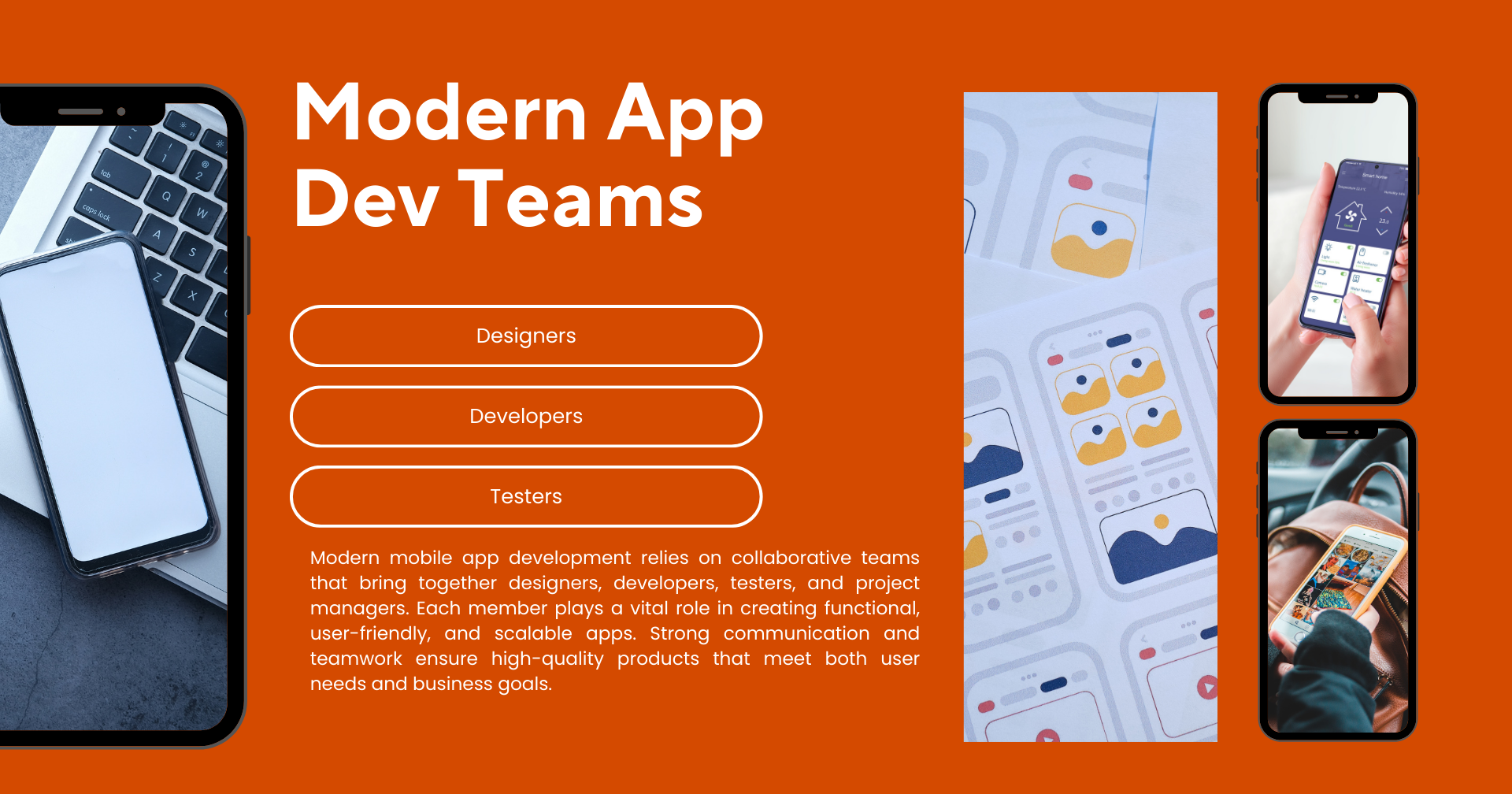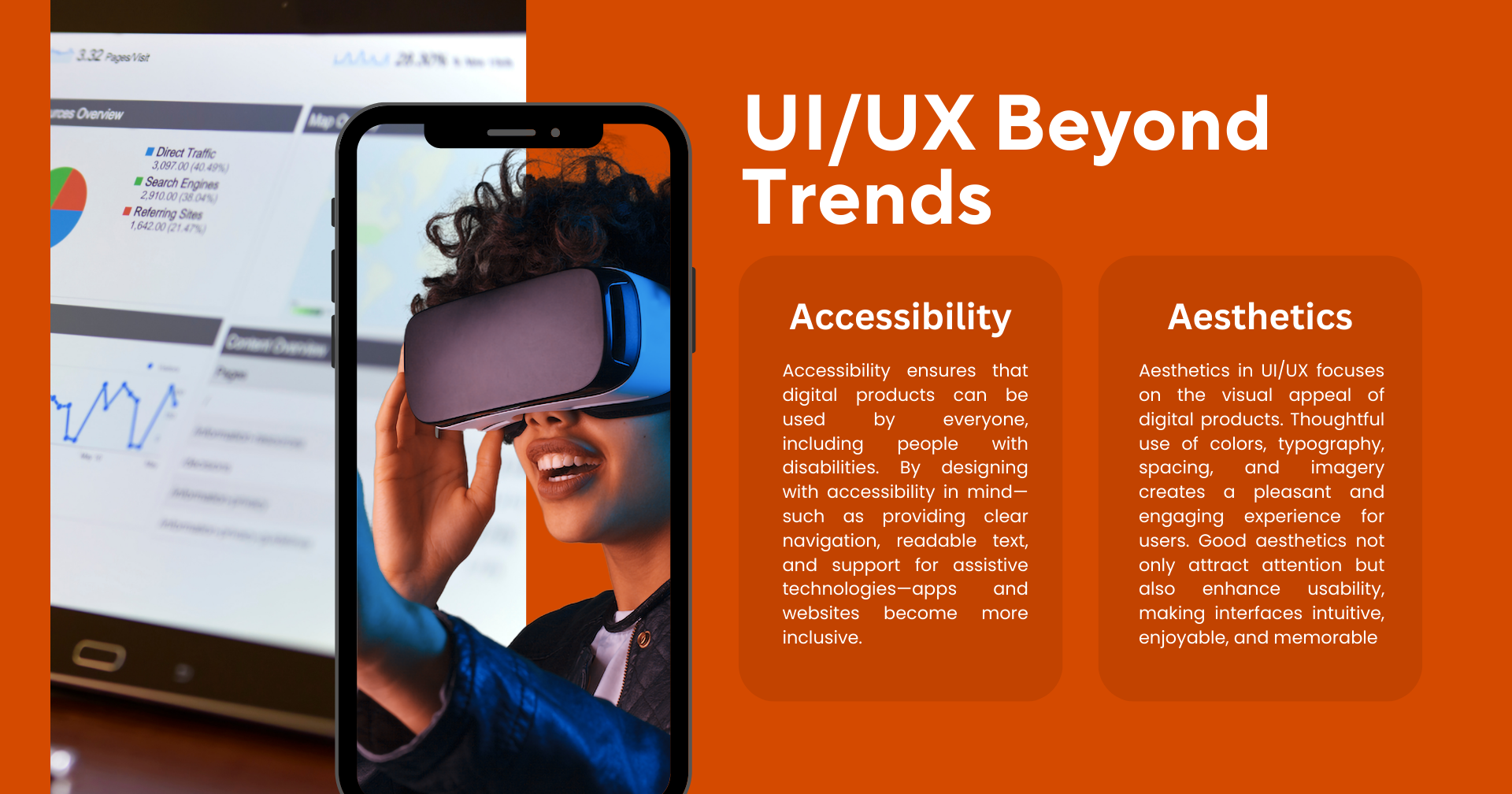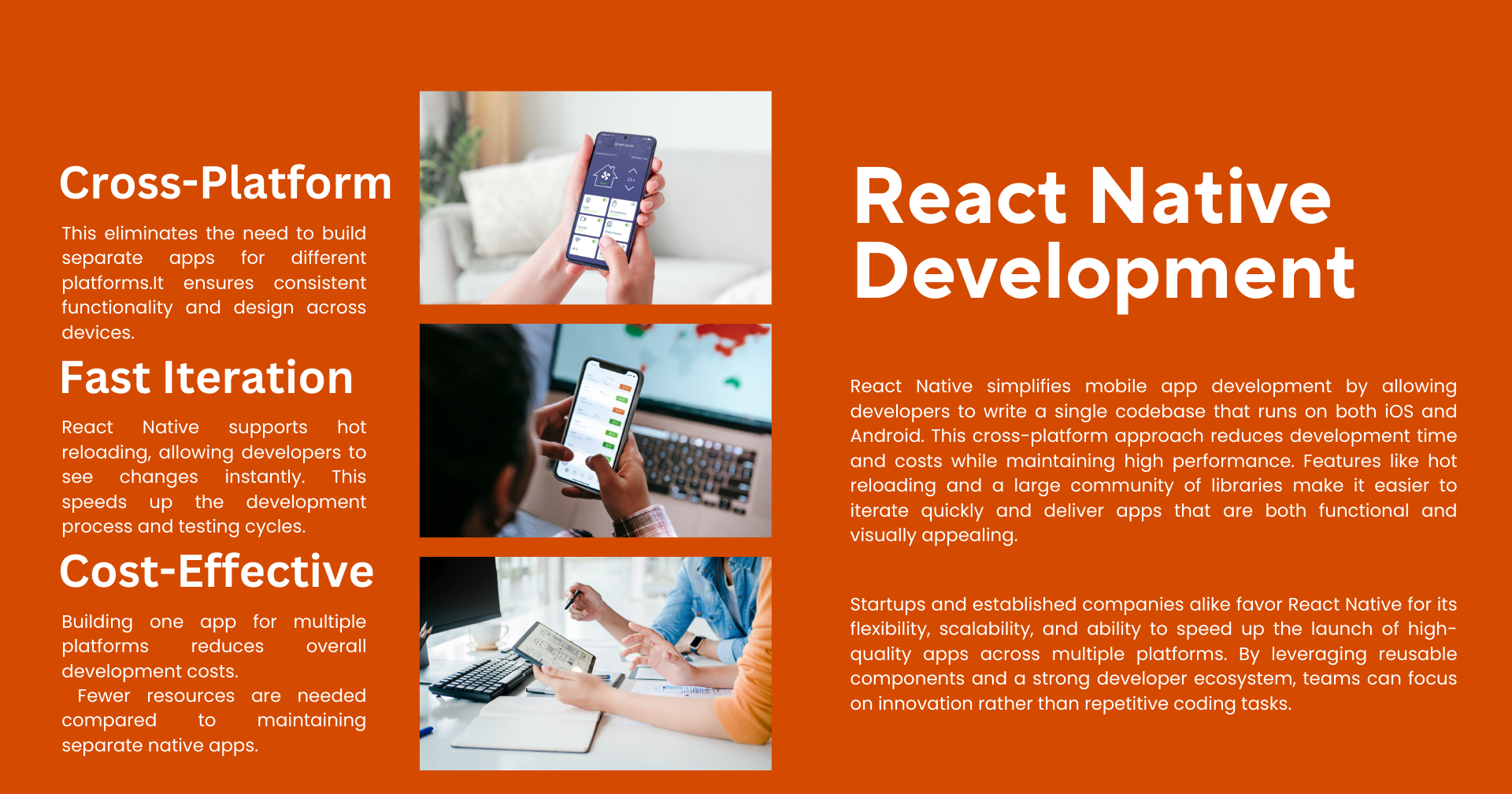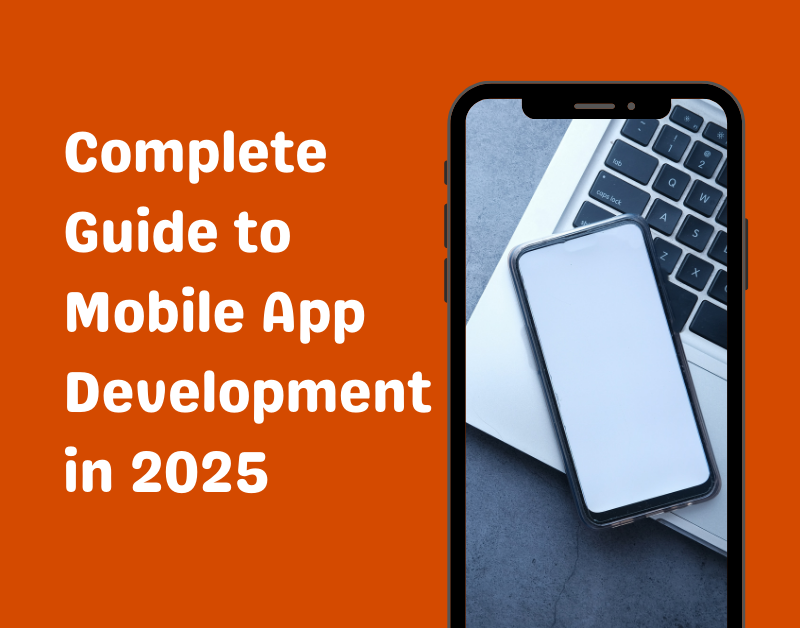Introduction
In a digitally driven world, Mobile app development has become a cornerstone of business innovation, user engagement, and brand loyalty.Smartphones are now an integral part of daily life, with users relying on mobile apps for everything from communication and shopping to education and entertainment. As a result, businesses that once hesitated to invest in mobile solutions are now actively prioritizing their app development strategies.
Mobile apps offer a direct and personalized channel for engaging with customers. Unlike websites, which are often accessed sporadically, mobile apps provide a continuous, interactive experience. Push notifications, in-app messages, and seamless user journeys allow brands to maintain a direct line of communication with their audience, boosting engagement, retention, and loyalty.
The competition for user attention in 2025 is fiercer than ever. With millions of apps available across iOS and Android platforms, delivering a high-quality mobile experience is critical. App design, user interface (UI), and user experience (UX) have become just as important as functionality. A well-designed app can make the difference between users staying loyal to your brand or switching to a competitor.
Mobile app development also serves as a driver of business innovation. Apps can streamline operations, introduce new revenue models, and integrate emerging technologies like artificial intelligence, augmented reality, and IoT. Companies that leverage these technologies strategically can differentiate themselves in saturated markets and create unique value for their users.
Choosing the right development framework is another cornerstone of successful mobile app development. Native development, hybrid approaches, and cross-platform frameworks each have distinct advantages. Understanding which approach aligns with your business goals, target audience, and budget ensures that your app is scalable, efficient, and future-proof.
Development methodologies, such as Agile and Scrum, have also transformed how mobile apps are built. These approaches prioritize iterative development, collaboration, and user feedback, allowing teams to deliver high-quality apps faster while continuously adapting to user needs and market trends.
Finally, future-proofing your app is essential for long-term success. Mobile platforms, operating systems, and user expectations are constantly evolving. Planning for updates, scalability, and technological advancements ensures that your app remains relevant, secure, and competitive over time.
This comprehensive guide explores all these aspects in detail, providing insights into design best practices, development tools, frameworks, and strategies that will help businesses excel in mobile app development in 2025 and beyond. By following these principles, companies can deliver exceptional digital experiences that meet user expectations, drive engagement, and generate lasting business value.
Matters in 2025 Why Mobile App Development
Smartphone usage has exploded globally, with billions of users interacting with mobile applications daily for banking, shopping, fitness, healthcare, and entertainment. Businesses have realized that without a dedicated mobile presence, they risk losing relevance in a highly competitive digital space. This makes mobile app development more critical than ever.
Whether you’re a startup or a large enterprise, investing in a robust mobile strategy is no longer optional—it’s imperative. Engaging, efficient, and scalable apps developed through mobile app development can dramatically boost customer retention and revenue. Additionally, leveraging innovative approaches in mobile app development ensures that businesses stay ahead of technological trends and user expectations.
Understanding the Role of Mobile App Developers
Behind every successful app is a team of skilled mobile app developers. These professionals are responsible for turning concepts into fully functional, user-friendly applications. Whether working on Android, iOS, or cross-platform environments, mobile app developers combine technical expertise with creative problem-solving to deliver seamless user experiences.
Their expertise ensures that performance, security, and usability standards are met, laying the foundation for a sustainable and scalable digital product.
From Concept to Launch: Application Development Process
Every application development project begins with a clear objective. The process includes brainstorming features, identifying target users, and mapping out essential user journeys. This is followed by choosing the right technology stack, designing the UI/UX, and finally coding the app.
A well-defined application development process minimizes risk, streamlines communication, and improves time-to-market.
The Importance of Mobile Application Developers
The Importance of Mobile Application Developers improves time-to-market. Much like developers, mobile application developers bring the app to life through code, frameworks, and tools. However, their focus may differ based on specialization—some work exclusively with Android or iOS, while others specialize in hybrid apps. Mobile application developers are often tasked with maintaining and updating the app post-launch, ensuring performance improvements and adapting to OS updates.
All About App Development: Building Smart & Scalable Apps
The term app dev is shorthand for app development and encompasses everything from strategy and wireframing to coding and deployment. A successful app dev strategy includes not just development but also testing, user feedback loops, and deployment on app stores. The most forward-thinking companies approach app dev with agility, consistently improving based on market trends and user behavior.
The Rise of Mobile App Dev Teams
Gone are the days when one developer could handle everything. Modern mobile app development teams consist of UI/UX designers, frontend and backend developers, QA testers, and project managers. These teams collaborate in an agile environment to ensure that each app is functional, beautiful, and scalable. As the mobile app development ecosystem grows, collaboration tools and cross-functional communication become essential for delivering high-quality products.

How to Develop Application for Your Business?
Developing a mobile application that effectively serves your business goals begins with a deep understanding of your audience. Knowing who your users are, their needs, preferences, and pain points allows you to design an app that solves real problems and delivers genuine value. This user-centered approach ensures that your app resonates with the target audience from the very first interaction.
Before diving into development, it’s crucial to define the core problem your app will address. Whether it’s streamlining internal processes, improving customer engagement, or offering a new service, having a clear problem statement keeps the development focused and purposeful. A well-defined objective also serves as a foundation for setting measurable goals and KPIs.
Choosing the right development framework is another critical step. Native development offers optimal performance and a seamless user experience on a specific platform, while cross-platform frameworks provide faster development and broader reach. Evaluating your business requirements, budget, timeline, and desired features will guide the choice of the most suitable framework for your app.
Setting clear key performance indicators (KPIs) is essential for measuring the success of your mobile application. Metrics such as user retention, engagement rates, session duration, and conversion rates help track whether your app meets business objectives. Regularly monitoring these KPIs ensures that the app continues to deliver value and highlights areas for improvement.
Data security and privacy should be prioritized from the beginning. Implementing robust authentication, encryption, and compliance with local and international data protection regulations builds trust with users and protects sensitive business and customer information. Security considerations are not just a technical necessity—they are a critical part of user experience and brand reputation.
Market research and competitive analysis are also vital to developing a successful app. Understanding what similar apps offer, identifying gaps in the market, and analyzing competitor strengths and weaknesses help you differentiate your offering. This research informs design decisions, feature prioritization, and overall app strategy, ensuring your product stands out in a crowded marketplace.
By combining user research, clear objectives, the right development framework, measurable KPIs, and attention to security, businesses can create applications that are functional, engaging, and aligned with strategic goals. Thoughtful planning and execution at every stage of development increase the likelihood of building a successful app that meets user needs and drives business growth.
Trends in Mobile Application Development
https://en.wikipedia.org/wiki/Mobile_app_development
Mobile application development continues to evolve with advancements in 5G, AI, machine learning, and augmented reality. These technologies are redefining what’s possible in user interaction, personalization, and performance. Modern mobile application development also includes features like real-time tracking, offline access, and advanced analytics—all of which boost user satisfaction and retention.
Collaborating with Mobile App Developers
Partnering with experienced mobile app developers can make or break your project. Whether you’re hiring in-house or outsourcing, choose professionals who understand your industry and are proficient in your preferred technology stack. Strong communication and a clear product roadmap are crucial when working with mobile app developers.
The Role of Mobile Application Developers in Optimization
In today’s highly competitive mobile app market, the role of a mobile application developer extends far beyond simply writing code. Developers are responsible for ensuring that every aspect of the app functions smoothly, delivering a seamless experience for users while meeting business objectives. Their work impacts performance, security, and overall user satisfaction.
Optimization begins with app performance. Developers monitor loading speeds, reduce memory usage, and optimize background processes to make sure the app runs efficiently across a wide range of devices. Slow or laggy apps often lead to user frustration and high abandonment rates, making performance optimization a critical responsibility.
Security is another key area where developers play a vital role. They implement robust authentication systems, encrypt sensitive data, and ensure compliance with privacy regulations. By addressing potential vulnerabilities during development, mobile application developers protect both users and businesses from data breaches and other security threats.
Mobile developers are also responsible for integrating third-party APIs and services. Whether it’s payment gateways, analytics tools, or social media integrations, these connections must function seamlessly without affecting app performance. Proper API integration enhances app functionality while maintaining stability and user trust.
Compliance with app store guidelines is another essential responsibility in mobile app development. Developers ensure that apps meet all requirements for platforms like the Apple App Store and Google Play Store, avoiding rejections, delays, or functionality issues that could affect user experience and business timelines. Proper adherence to these guidelines is a fundamental part of mobile app development best practices.
Post-launch support is where developers continue to add value in mobile app development. They roll out updates, fix bugs, and implement feature enhancements based on user feedback and analytics. Continuous optimization ensures that the app remains competitive, secure, and aligned with evolving user expectations. This ongoing work is a core aspect of professional mobile app development.
Ultimately, mobile application developers are the backbone of any app’s success. Their expertise in performance tuning, security, API integration, compliance, and ongoing optimization ensures that the app not only works flawlessly but also provides a high-quality, engaging experience.
Businesses that invest in expert mobile app development benefit from higher user satisfaction, stronger retention, and long-term growth. Mastering these processes is what separates average apps from successful ones in mobile app development today.
Maximizing Impact with Mobile App Dev Strategies
When planning your mobile app dev strategy, consider whether your app should be native, hybrid, or web-based. Each option has its pros and cons regarding performance, cost, and development time. A robust mobile app dev roadmap will factor in user needs, tech capabilities, and future scalability.
Choosing the Right Mobile Application Platform
Selecting a mobile application platform is a critical decision that impacts everything from user experience to long-term maintenance. Native platforms like iOS and Android offer superior performance, while cross-platform tools like React Native or Flutter allow for faster development. The mobile application platform you choose should align with your audience and your team’s skillset.
User Interface UI Design: Where Function Meets Aesthetics
An intuitive user interface ui design is non-negotiable in today’s mobile apps. Users expect simplicity, speed, and clarity, and anything less leads to uninstalls. A good user interface ui design bridges the gap between functionality and visual appeal. Animations, micro-interactions, and gesture-based navigation can significantly improve the user experience.
UI Design: The Visual Language of Your App
At the heart of every great mobile app development project lies strong UI design. The user interface is the visual language that shapes how people navigate the app, complete tasks, and connect with content. In mobile app development, UI design is not just about aesthetics but also about creating a smooth and intuitive experience that feels natural from the very first tap.
Consistency plays a key role in mobile app development success. Elements like typography, spacing, color schemes, and icons must work together to build a cohesive identity. A well-structured interface reduces confusion and ensures users know exactly where to go, what to do, and how to interact without unnecessary friction.
Ultimately, great UI design in mobile app development becomes invisible—it simply “feels right” to the user. When visual design and usability merge seamlessly, users enjoy a frictionless experience that encourages longer engagement, higher satisfaction, and stronger app performance overall.
User Interface Design That Drives Conversions
A thoughtful user interface design can dramatically increase conversion rates in mobile app development. From call-to-action buttons to intuitive navigation paths, every element in mobile app development should be created with a clear purpose.
The psychology of color, spacing, and hierarchy plays a critical role in shaping user behavior, especially when applied to mobile app development projects. Effective user interface design ensures that mobile app development delivers not just functionality but also measurable business results. By aligning design principles with user needs, mobile app development can transform casual visitors into loyal, long-term customers.
Why UIUX is More Than a Trend?
Combining both form and function, uiux refers to the intersection of interface aesthetics and overall usability. Effective uiux strategies consider everything from accessibility to device compatibility, resulting in user-friendly applications. Businesses that prioritize uiux often see higher user retention and app ratings.

Best Practices for UX and UI Design
Both ux and ui design are crucial for the success of a mobile app. While UI focuses on visuals and layout, UX ensures that each interaction feels natural and purposeful. Together, ux and ui design create meaningful user experiences. By investing in both aspects, companies build trust and brand loyalty.
How to Design UI UX That Users Love?
If you want to design ui ux experiences that delight users, focus on simplicity, feedback, and responsiveness. Research user behavior, test prototypes, and iterate constantly. To design ui ux effectively, align your design language with your brand identity and user expectations.
UX Design UI Design: A Synergistic Approach
The combination of ux design ui design ensures that users not only enjoy the look of your app but also its functionality. Great design enhances usability, while great UX ensures the user’s goals are met effortlessly.
This synergy creates a seamless and memorable app journey.
UX Interface Design That Enhances Experience
This synergy creates a seamless and memorable app journey. Modern ux interface design focuses on creating efficient, enjoyable, and task-oriented experiences. Clear pathways, error prevention, and fast loading times are hallmarks of good ux interface design. Attention to detail in ux interface design can turn average users into brand advocates.
The Role of User Interface UX in Retention
An effective user interface ux keeps users coming back. Smooth animations, intuitive gestures, and consistent layouts make users feel in control. Apps with strong user interface ux design typically enjoy higher ratings and longer session times. User-centric design leads to long-term engagement.
Balancing UI Design and UX Design
Successful apps strike a perfect balance between ui design and ux design. While beautiful interfaces grab attention, seamless UX keeps users engaged. Make sure both teams collaborate from the beginning of the project. Investing in both ui design and ux design results in a cohesive and compelling product.
How Interface Designers Shape User Perception
Interface designers are the architects of digital experiences. They translate wireframes into visual components, working closely with developers and product managers. Great interface designers focus on usability, consistency, and accessibility.
The Significance of UI in Design Systems
The role of ui in design extends beyond visuals—it influences branding, usability, and even conversion rates. A well-executed ui in design makes an app intuitive and enjoyable, improving overall user satisfaction. It also enhances accessibility and supports responsive design.
Frameworks that Drive Mobile App Development
Frameworks like flutter, react native, and swift are revolutionizing Mobile app development. These tools allow developers to build powerful applications quickly and efficiently. Each offers unique advantages, so choosing the right one depends on your project requirements.
Why Kotlin is Rising in Popularity?
Kotlin is gaining ground as a preferred language for Android development. Its concise syntax, null safety, and full interoperability with Java make it ideal for modern Mobile app development projects. It’s also officially supported by Google, which adds to its credibility.
Reactnative: Streamlining Cross-Platform Development
Reactnative allows developers to write once and deploy across platforms. It’s a favorite among startups for its cost-effectiveness and quick iteration capabilities. Reactnative supports hot reloading, which speeds up the development process.

How JavaScript React Native Empowers Teams
Using javascript react native combines the flexibility of JavaScript with the performance of native components. Teams can iterate faster while delivering apps that feel native on both platforms. This makes javascript react native an excellent choice for MVPs and full-scale apps alike.
Comparing React and React Native
Understanding the distinction between react and react native helps you choose the right tool for your app. While React is used for web applications, react native is optimized for mobile. When deciding between react and react native, consider your audience, budget, and timeline.
When to Transition from React to React Native?
Companies often start with web-based React applications and later transition from react to react native for mobile. This shift allows for code reusability and consistent user experience across platforms. Planning the move from react to react native ensures smoother transitions and better ROI.
The Value of Wireframing in Design
Before coding begins, designers start with wireframing. It helps visualize layout, functionality, and navigation paths without getting bogged down in details. Effective wireframing reduces the risk of costly revisions. It’s the blueprint of any digital product.
Building a Wireframe Web for Your App
Creating a wireframe web for your app enables clear communication between stakeholders. It outlines the user journey, allowing for collaborative feedback before development begins. A strong wireframe web foundation results in better final products.
Using Agile Software Development Methodology
Adopting agile software development methodology leads to faster delivery, higher product quality, and better team collaboration. This iterative approach allows for flexibility and regular feedback. Teams that follow agile software development methodology adapt better to changing market needs.
Exploring Agile System Development for Apps
Agile system development isn’t just for web or enterprise software—it’s essential in Mobile app development too. It allows for iterative releases, frequent testing, and real-time user feedback. Agile system development leads to better alignment between business goals and user expectations.
Implementing Scrum Development in App Projects
Scrum development introduces structure through roles like Product Owner and Scrum Master. It promotes transparency, accountability, and continuous improvement in mobile app development projects. Scrum development is especially effective in mobile app development where flexibility and rapid delivery are critical.
By encouraging collaboration and adaptability, it ensures smoother workflows and quicker results for teams working on complex mobile app development tasks.
Agile project development adds further value by offering structured sprints, measurable goals, and faster pivots. In mobile app development, this approach enables quicker launches and better responsiveness to user feedback.
Agile methods also improve stakeholder visibility and satisfaction, ensuring that mobile app development projects stay aligned with business objectives while delivering high-quality results.
Understanding Software Development Life Cycle Phases
The software development life cycle phases define each step of app creation—from planning to deployment and maintenance. Following the software development life cycle phases ensures that nothing is overlooked. Clear documentation and quality control are key at each stage.
How Software Development Life Cycle Models Improve Efficiency?
Different software development life cycle models (like Waterfall or Spiral) provide flexibility based on project type. These models guide teams through structured workflows that minimize risk and maximize value. Choosing the right software development life cycle models is critical for success.
Enhancing Engagement with Push Notifications
Push notifications keep users engaged by providing timely, relevant updates. They can inform users of discounts, updates, or reminders to complete an action. When used wisely, push notifications increase user retention and lifetime value.
Using Pusher Notifications to Improve Reach
Pusher notifications are a powerful tool for real-time communication within apps. They offer scalable infrastructure for chat messages, alerts, and updates. Implementing pusher notifications can enhance responsiveness and user satisfaction.
The Role of a Software Development Kit SDK
A software development kit sdk offers prebuilt tools and libraries that speed up the development process. From analytics to in-app purchases, the right software development kit sdk can significantly reduce time to market. It ensures standardization and accelerates Mobile app development timelines.


